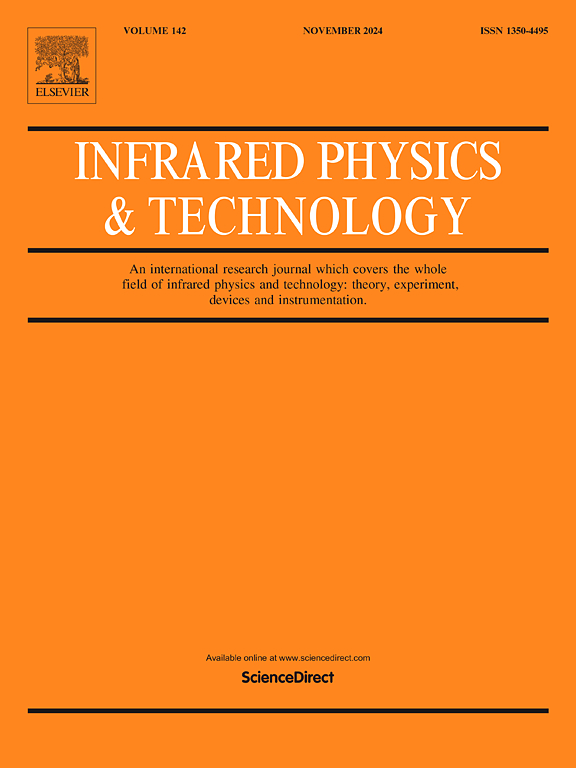Smart camouflage film compatible with visible-infrared stealth and thermal dissipation
IF 3.1
3区 物理与天体物理
Q2 INSTRUMENTS & INSTRUMENTATION
引用次数: 0
Abstract
The development of visible-infrared combined detection technology necessitates the compatibility of stealth film with multiband stealth. In this work, we proposed a smart camouflage film that is compatible with both visible-infrared stealth and thermal dissipation. The smart camouflage film is a planar photonic multilayer structure composed of a VO2-based intelligent radiator and stacked Ge/BaF2 spectrally-selective filter. It has been demonstrated that such a film has the capacity to automatically switch the emittance in a large scale outside the atmospheric window, depending on the temperature. This is attributable to the Fabry-Perot resonance, which has an emittance tunability of 0.900. In the SWIR, MWIR, and LWIR bands, the proposed film maintains low emittance of 0.036, 0.062, and 0.101, respectively, attributable to the multiple reflection of the stack structure. A high absorptance of 0.739 in the VIS-NIR band is also obtained, which can be attributed to the absorption of the Ge layer. The spectrally-selective properties of absorption and emission remain excellent even at large incident angles. The calculations of emission power, infrared signal intensity reduction, and radiation temperature demonstrate the excellent thermal control and stealth properties of the smart camouflage film. The proposed film demonstrates the great potential to accelerate the development and application of multiband camouflage film.
智能伪装膜兼容可见-红外隐身和散热
可见-红外联合探测技术的发展要求隐身膜能够兼容多波段隐身。在这项工作中,我们提出了一种既能隐身又能散热的智能伪装膜。该智能伪装膜是由基于vo2的智能辐射体和堆叠的Ge/BaF2光谱选择滤波器组成的平面光子多层结构。已经证明,这种薄膜具有在大气窗口外根据温度自动大规模切换发射率的能力。这是由于法布里-珀罗共振,其发射度可调性为0.900。在SWIR、MWIR和LWIR波段,由于叠层结构的多重反射,该薄膜分别保持了0.036、0.062和0.101的低发射度。在VIS-NIR波段也获得了0.739的高吸光度,这可归因于Ge层的吸收。即使在大入射角下,吸收和发射的光谱选择性仍然很好。发射功率、红外信号减弱强度和辐射温度的计算表明,该智能伪装膜具有良好的热控和隐身性能。该膜对加速多波段伪装膜的发展和应用具有很大的潜力。
本文章由计算机程序翻译,如有差异,请以英文原文为准。
求助全文
约1分钟内获得全文
求助全文
来源期刊
CiteScore
5.70
自引率
12.10%
发文量
400
审稿时长
67 days
期刊介绍:
The Journal covers the entire field of infrared physics and technology: theory, experiment, application, devices and instrumentation. Infrared'' is defined as covering the near, mid and far infrared (terahertz) regions from 0.75um (750nm) to 1mm (300GHz.) Submissions in the 300GHz to 100GHz region may be accepted at the editors discretion if their content is relevant to shorter wavelengths. Submissions must be primarily concerned with and directly relevant to this spectral region.
Its core topics can be summarized as the generation, propagation and detection, of infrared radiation; the associated optics, materials and devices; and its use in all fields of science, industry, engineering and medicine.
Infrared techniques occur in many different fields, notably spectroscopy and interferometry; material characterization and processing; atmospheric physics, astronomy and space research. Scientific aspects include lasers, quantum optics, quantum electronics, image processing and semiconductor physics. Some important applications are medical diagnostics and treatment, industrial inspection and environmental monitoring.

 求助内容:
求助内容: 应助结果提醒方式:
应助结果提醒方式:


